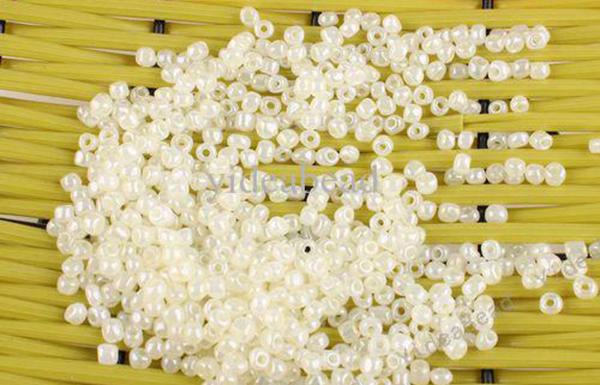
source: DHGate.com
Anyone can buy seed beads like these — but not just anyone can be a Native craftsperson.
AJ Earl, ICTMN
Whether you’re Assiniboine, Nʉmʉnʉ, Skokomish or otherwise, you’ve probably got some beadwork somewhere. It might be a gift for your family, for friends or maybe a co-worker who’s done an exceptional thing for you. It’s important and it’s a heartfelt thing, but where did it come from? Is it handmade or is it fake? If it’s fake, could you tell?
Although we sometimes take for granted our talented craftspeople, it’s important to know that there are threats to their very livelihoods. Much of the problem stems from fakes. The market for various Native arts has been flooded for years with fakes and knock-offs, and bead-work is no different. For the last few decades the craftspeople who make a living off of bead-work have had to contend with competition from non-natives and from overseas. Spotting these fakes and knowing why it’s important to call them out is only part of the solution. Knowing what to do and then acting is key.
Even if you buy from a pow wow, it’s not always guaranteed that the bead-work you get will be authentic. No matter how observant you are, if you roll it over in your hands, look it up and down, it’s sometimes hard to tell what exactly you’re buying. Many fakes simply look convincing. AAA Native Arts, a website devoted to selling native arts, says that bead-work is often imported from China and Taiwan. Still other problems exist with non-Natives selling imitations or art “inspired by” Native crafts, often times unlabeled as such. This can be a problem for the broader Native community.
A quick search online for “imitation native american bead-work” brings up 14,300,000 results on Google.com, and similar numbers on other search engines. Searching for “imitation native american headdress” gets 10.3 million results. A look for “native american costume” nets almost 4.4 million results. Almost none of the pieces look quite as good as something you’d get from a cousin or from one of our skilled elders, it’s missing something vital.
One of the most important aspects of Native bead-work, one thing that fakes lack, is its deep cultural value. Many of us can identify a friend or family member who beads. One such person is Cynthia Parrott from Washington State. A junior at the Tacoma campus of the University of Washington, Cynthia has been working with beads for years. She started working with beads in 5th grade after watching her mother for years, saying “ it was either this or weaving.” It’s a family matter as much as it is a personal one.
Parrott also brings up a second important aspect of bead-working: sustaining their families and themselves. “In college we all need extra money, so my bead-work is the way I make extra money,” says Parrott, “it’s my own little business”. For this reason she’s keenly aware of the fakes and fraudulent Native crafts that flood the market from time to time. “My craft is mass-produced in Guam and is brought here,” Parrott adds, “I think it is so disrespectful and there is no way we can compete with these prices.”
In order to help stem this tide the United States Congress passed the Indian Arts and Crafts Act of 1990. This act sets out to create standards for labeling and representation. It sets clear limits on who can call their art Native, how they can label it when they sell it, and who exactly is able to benefit from this protection. The reason was wholly cultural: bead-working and many other crafts can be traced back centuries, well before Columbus landed here. Beads, for example, originally started as bits of stone, shell, clay, bird bones or the leg bones of small animals. Pre-Columbian archeological sites often contain beads of all sorts. Protecting this art is vital to ensure the continuation of the multitude of Native cultures.
Of course, this act did not create a series of agents trolling pow wows and craft fairs in Brooklyn for fake Native crafts, so what do you do if you suspect what you’ve bought or what a dealer is selling is a fake? You get in contact with somebody! In order for it to be successful, it requires an attentive population calling out items they suspect of being fake or artists selling Native art that they think may not be Native. To that end, the Indian Arts and Crafts Act of 1990 needs you to be effective! The law allowed for the creation of the Indian Arts and Crafts Board. This board is tasked with oversight of enforcement and reporting and is the place you bring complaints and reports of violations. It also has brief reports, examples of violations and info brochures for you to download at its website: iacb.doi.gov.
To protect our culture we need to be aware of what we’re looking for and what to do if we find it. The problem is clear and the solution is there. Now let’s do something about it!
Read more at http://indiancountrytodaymedianetwork.com/2013/08/23/cant-bead-real-thing-fakes-frauds-and-what-you-can-do-about-it-150988
